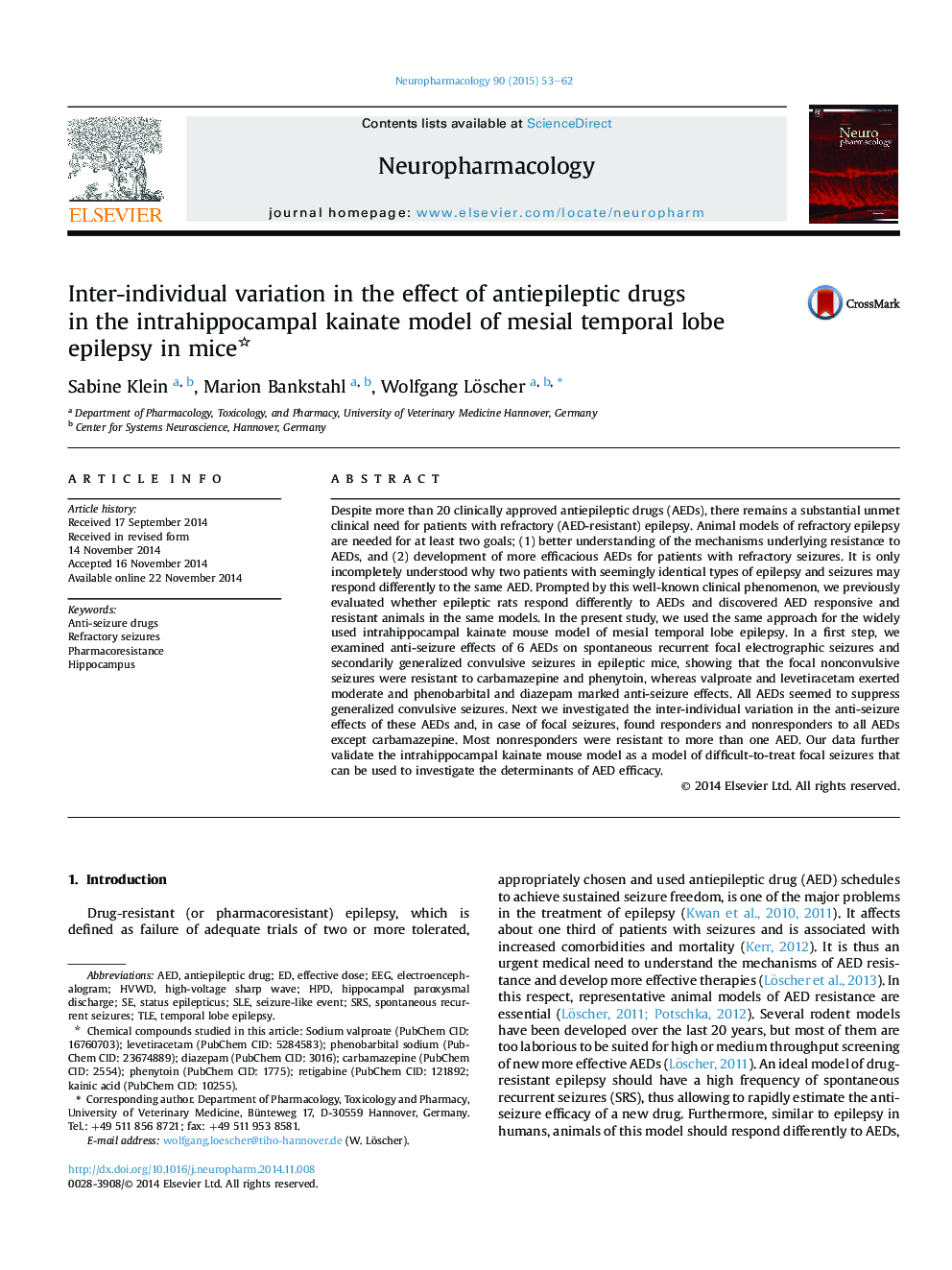| کد مقاله | کد نشریه | سال انتشار | مقاله انگلیسی | نسخه تمام متن |
|---|---|---|---|---|
| 5814104 | 1556624 | 2015 | 10 صفحه PDF | دانلود رایگان |
عنوان انگلیسی مقاله ISI
Inter-individual variation in the effect of antiepileptic drugs in the intrahippocampal kainate model of mesial temporal lobe epilepsy in mice
دانلود مقاله + سفارش ترجمه
دانلود مقاله ISI انگلیسی
رایگان برای ایرانیان
کلمات کلیدی
SRSTLEAEDPharmacoresistanceHPDhippocampal paroxysmal dischargeElectroencephalogram - الکتروانسفالوگرافیstatus epilepticus - بحران صرعی یا صرع پایدارspontaneous recurrent seizures - تشنج مجدد خودبخودیrefractory seizures - تشنجهای مقاومanti-seizure drugs - داروهای ضد تشنجantiepileptic drug - داروهای ضدصرعEffective dose - دوز موثرseizure-like event - رویداد مشابه تشنجtemporal lobe epilepsy - صرع لوب تمپورالSLE - لوپوس منتشر یا لوپوس اریتماتوس سیستمیکEEG - نوار مغزیHippocampus - هیپوکامپ
موضوعات مرتبط
علوم زیستی و بیوفناوری
علم عصب شناسی
علوم اعصاب رفتاری
پیش نمایش صفحه اول مقاله

چکیده انگلیسی
Despite more than 20 clinically approved antiepileptic drugs (AEDs), there remains a substantial unmet clinical need for patients with refractory (AED-resistant) epilepsy. Animal models of refractory epilepsy are needed for at least two goals; (1) better understanding of the mechanisms underlying resistance to AEDs, and (2) development of more efficacious AEDs for patients with refractory seizures. It is only incompletely understood why two patients with seemingly identical types of epilepsy and seizures may respond differently to the same AED. Prompted by this well-known clinical phenomenon, we previously evaluated whether epileptic rats respond differently to AEDs and discovered AED responsive and resistant animals in the same models. In the present study, we used the same approach for the widely used intrahippocampal kainate mouse model of mesial temporal lobe epilepsy. In a first step, we examined anti-seizure effects of 6 AEDs on spontaneous recurrent focal electrographic seizures and secondarily generalized convulsive seizures in epileptic mice, showing that the focal nonconvulsive seizures were resistant to carbamazepine and phenytoin, whereas valproate and levetiracetam exerted moderate and phenobarbital and diazepam marked anti-seizure effects. All AEDs seemed to suppress generalized convulsive seizures. Next we investigated the inter-individual variation in the anti-seizure effects of these AEDs and, in case of focal seizures, found responders and nonresponders to all AEDs except carbamazepine. Most nonresponders were resistant to more than one AED. Our data further validate the intrahippocampal kainate mouse model as a model of difficult-to-treat focal seizures that can be used to investigate the determinants of AED efficacy.
ناشر
Database: Elsevier - ScienceDirect (ساینس دایرکت)
Journal: Neuropharmacology - Volume 90, March 2015, Pages 53-62
Journal: Neuropharmacology - Volume 90, March 2015, Pages 53-62
نویسندگان
Sabine Klein, Marion Bankstahl, Wolfgang Löscher,